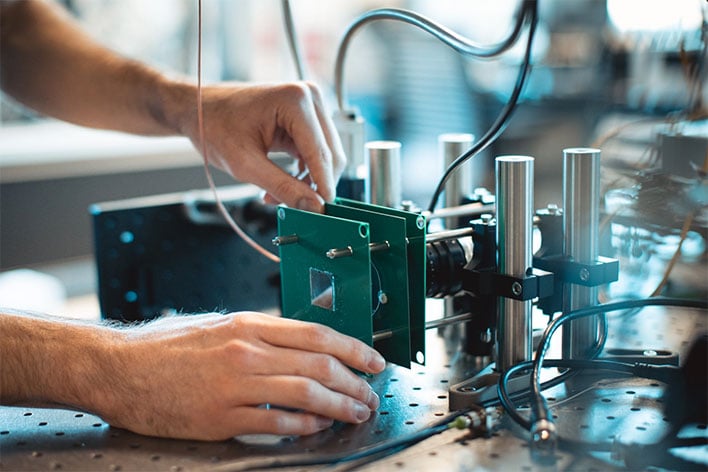Your Next Phone Camera Could See And Capture The World In 3D

Smartphone cameras have come a long way in a relatively short time, and they could be in for another major leap in capabilities. Researchers at Stanford University have developed a prototype LiDAR system (shown above) that captures megapixel-resolution depth maps to enable image sensors to see in three dimensions instead of two.
In essence, this kind of camera system uses light to measure distance between objects. This is something that typically requires specialized and expensive equipment, like those big and bulky LiDAR mechanisms that adorn autonomous vehicles. But in this case, researchers figured out a way to harness this tech in practically any sensor available today, including smartphone cameras. That means smartphone makers could, in theory, implement camera systems that could capture 3D images without adding a bunch of hardware to the mix.
"We report a new type of single
frequency intensity modulator that we refer to as a longitudinal piezoelectric resonant
photoelastic modulator. The modulator consists of a thin lithium niobate wafer coated with
transparent surface electrodes," the researchers explain in a paper published in Nature.
"One of the fundamental acoustic modes of the modulator is
excited through the surface electrodes, confining an acoustic standing wave to the electrode
region. The modulator is placed between optical polarizers; light propagating through the
modulator and polarizers is intensity modulated with a wide acceptance angle and record
breaking modulation efficiency in the megahertz frequency regime," the researchers add.
In plain language, the team figured out how to add a light source and a modulator to turn light on and off rapidly—millions of times per second—to measure distances with everyday camera sensors. This type of thing usually requires an enormous amount of power, but they got around that requirement by designing and building an acoustic modulator that can be integrated into off-the-shelf cameras, including those found in everyday smartphones and DSLRs.
It's worth noting that Apple already uses Lidar in its iPhone 13 Pro Max and iPhone 13 Pro handsets to improve low light photography (and for Night Mode). It's said that the system developed by Stanford researchers is actually cheaper than Apple's.
This tech has far-reaching implications. Health and fitness, sports training, remote working, better biometric security, and untapped metaverse experiences are just a few areas where this 3D camera tech could be beneficial.
You can check out the research paper (PDF) for a deeper dive into the nuts and bolts of it all.
Top Image Source: Andrew Brodhead (via Stanford.edu)

